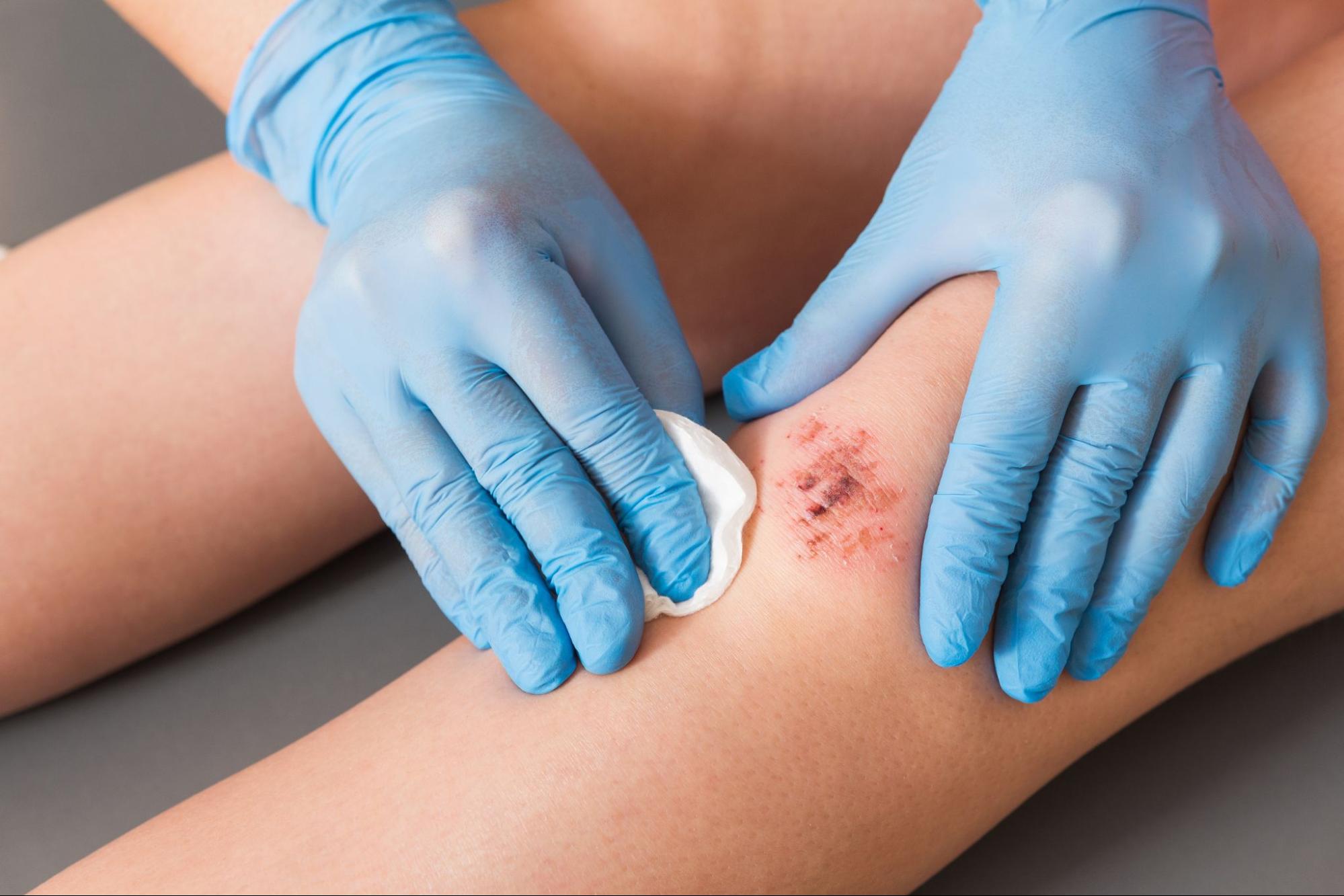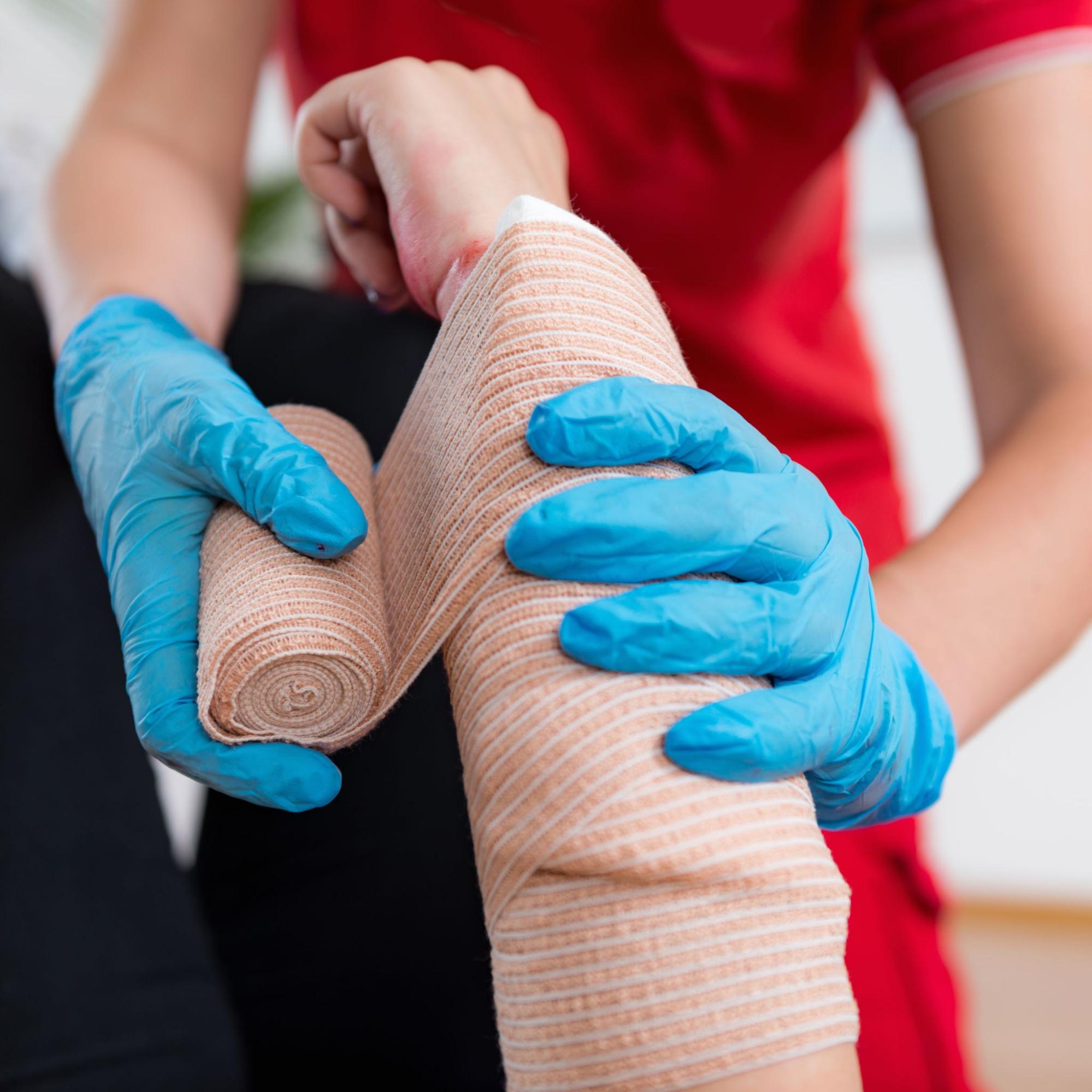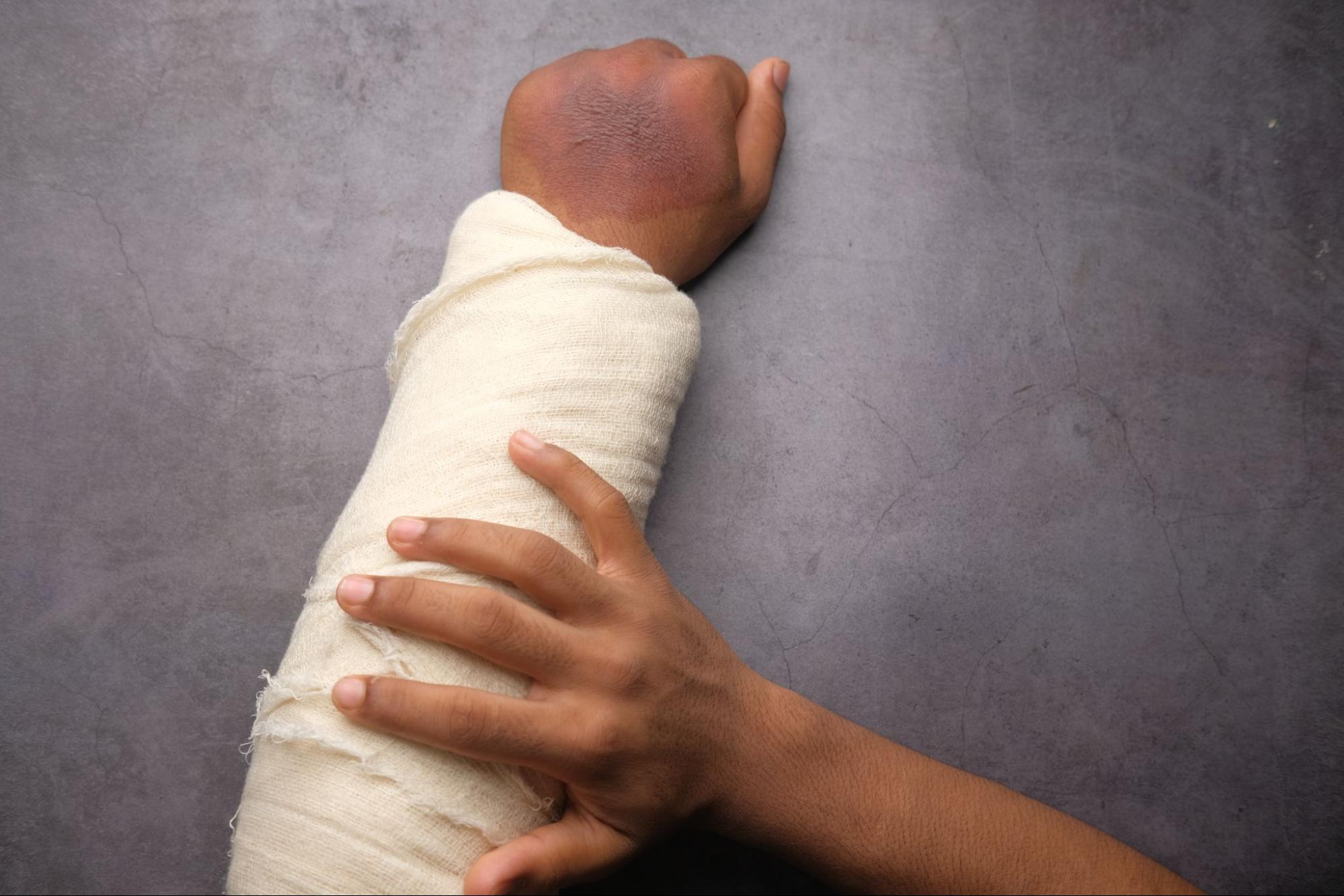
How Do You Know If a Wound is Infected?
Wounds are a common part of life, whether from accidental cuts, surgical procedures, or injuries. While most heal without complications, infections can occur when bacteria enter the wound, potentially leading to severe health problems if left untreated. Recognizing the early signs of an infected wound is crucial for proper treatment and preventing complications such as abscesses, cellulitis, or sepsis.
How Does a Wound Heal?
Before identifying infection, it’s helpful to understand the healing process. Wound healing occurs in four primary stages:
1. Hemostasis (Clotting Phase)
The first response to a wound is to stop bleeding. Blood vessels constrict (vasoconstriction) to slow blood flow, while platelets gather at the injury site to form a clot. These platelets release signals that strengthen the clot with fibrin, a protein that acts as a protective mesh. This initial seal helps prevent excessive bleeding and creates a barrier against infection. Once the clot is stable, the body moves to the next phase.
2. Inflammatory Phase
Once bleeding is controlled, the immune system protects the wound. White blood cells, such as neutrophils and macrophages, rush in to fight bacteria, clear dead cells, and remove debris. This phase typically lasts a few days and is marked by redness, swelling, warmth, and mild pain. These signs indicate the body’s natural response to healing. However, if symptoms worsen instead of improving, it may signal an infection.
3. Proliferation Phase
During this stage, the body starts rebuilding. Fibroblasts produce collagen, a protein that strengthens the wound, while new blood vessels form to supply oxygen and nutrients. The wound may appear pink, swollen, or slightly raised as fresh tissue develops. Proper care is important to prevent reopening or infection since the new skin is still fragile.
4. Maturation (Remodeling) Phase
In the final phase, the wound gradually strengthens as collagen fibers reorganize. The new skin is initially weaker, but the fibers become more structured over time, improving durability. Any excess blood vessels shrink, reducing redness, and scars may begin to fade. While the healed skin may never be as strong as before, this phase ensures the tissue is as resilient as possible.
A properly healing wound should gradually improve, with reduced pain, swelling, and discharge over time. If healing stalls or worsens, an infection may be present.
Signs a Wound is Infected
While some discomfort is normal, the following symptoms indicate an infection may be developing:
Increased Pain and Tenderness
Pain is expected initially, but worsening pain several days after the injury could signal infection. If a wound becomes more tender rather than improving, bacteria may be causing inflammation.
Persistent Redness or Expanding Red Streaks
Redness around a wound is normal initially, but spreading redness or red streaks moving away from the wound site can indicate a bacterial infection. This condition, lymphangitis, can lead to untreated bloodstream infections.
Swelling That Doesn’t Improve
Some swelling is natural, but persistent or increasing swelling can indicate infection. If the area becomes firm, hot, or painful, it may indicate deeper tissue involvement.
Warmth Around the Wound
An infected wound often feels warmer than the surrounding skin. This heat results from the immune system sending more blood and white blood cells to fight the infection.
Pus or Discharge
While clear or slightly yellow fluid (plasma) can be part of normal healing, thick yellow, green, or foul-smelling pus suggests infection. This discharge occurs when white blood cells fight bacteria in the wound.
Delayed Healing or Worsening Appearance
A wound should show signs of improvement within a few days. Infection might prevent proper healing if it remains open, deepens, or becomes more irritated.
Fever and Chills
If the infection spreads beyond the wound, you may develop a fever (above 100.4°F or 38°C), chills, fatigue, or body aches. These symptoms suggest the body is fighting a more severe infection.
A Foul Odor
A strong, unpleasant smell from the wound is often a sign of bacterial infection and tissue breakdown.
Hard Lumps or Abscess Formation
If the wound area feels hard, raised, or forms a lump, it may indicate an abscess—a pus pocket requiring drainage.
What Causes a Wound to Become Infected?
Wound infections occur when bacteria, fungi, or viruses enter an open wound. Common causes include:
Poor Wound Hygiene
Failing to clean and properly cover wounds allows bacteria to enter, significantly increasing the risk of infection, which leads to delayed healing and potential complications that may require medical attention.
Bacterial Exposure
Common bacteria such as Staphylococcus aureus, Streptococcus, and Pseudomonas frequently infect wounds and cause inflammation. These infections can spread and lead to more serious health issues if left untreated.
Dirty or Contaminated Wounds
Cuts from dirty objects, animal bites, or puncture wounds are more likely to introduce harmful bacteria into the body. These types of wounds require thorough cleaning and monitoring to prevent infection.
Weakened Immune System
Conditions like diabetes, cancer, or HIV can impair the body’s ability to fight infections, making wound healing much slower. People with weakened immune systems must take extra precautions to prevent complications.
Poor Circulation
Peripheral artery disease, smoking, and diabetes can reduce blood flow to wounds, preventing oxygen and nutrients from reaching the affected area. This lack of circulation slows healing and increases the likelihood of infection.
Improper Wound Care
Reusing bandages, touching wounds with dirty hands, or using non-sterile tools can introduce bacteria and increase the risk of infection. Proper hygiene and wound care are essential to promote faster healing and prevent complications.

Who is at Higher Risk for Wound Infections?
While anyone can develop an infected wound, some people face a higher risk:
Diabetics
High blood sugar levels can interfere with the body’s natural healing process, making wounds take longer to close. Additionally, diabetes weakens the immune system, increasing the risk of infections.
Elderly Individuals
As people age, their skin becomes thinner and less elastic, which slows the body’s ability to repair itself. Reduced immune function and circulation can further delay healing and make wounds more susceptible to infection.
Surgery Patients
Surgical wounds require proper care to heal correctly, but they can easily become infected if they are not kept clean. Infections in surgical sites can lead to complications such as delayed healing, abscess formation, or even the need for additional medical intervention.
People With Poor Circulation
Conditions like vascular disease, diabetes, or peripheral artery disease can limit wound blood flow. Without proper circulation, the wound receives less oxygen and nutrients, making healing significantly slower and increasing the risk of complications.
Those With Autoimmune Diseases
Conditions like lupus, HIV, or those undergoing chemotherapy weaken the body’s ability to fight infections. As a result, wounds may take longer to heal and are more likely to become infected.
Smokers
Smoking reduces the amount of oxygen that reaches the blood, which is crucial for tissue repair and wound healing. Poor circulation caused by smoking also slows down recovery time and increases the risk of complications.
How to Prevent Wound Infections
Proper wound care from the start can significantly reduce the risk of infection. Following simple hygiene and wound care practices helps promote faster healing and prevent complications.
Wash Hands Before Touching Wounds
Always wash your hands with soap and water before handling a wound to prevent bacteria from transferring to the open area and reduce the risk of infection.
Clean Cuts Immediately
When an injury occurs, rinse the wound under running water and gently clean it with mild soap. Removing dirt and bacteria early on is crucial for preventing infection.
Use Antiseptic Solutions
Antiseptic solutions like hydrogen peroxide or iodine can help kill bacteria. However, these should be used only initially, as overuse can delay healing.
Apply Antibiotic Ointments
A thin layer of antibiotic ointment, such as Neosporin, provides a protective barrier that helps prevent bacteria from entering the wound. This ointment also keeps the area moist, promoting better healing.
Cover With Clean, Breathable Bandages
Keeping a wound covered with a sterile bandage helps protect it from dirt and bacteria. Choose breathable materials that allow air circulation while still keeping contaminants out.
Change Dressings Daily or As Needed
Regularly replacing bandages minimizes bacteria and moisture buildup. If the dressing becomes wet or dirty, it should be changed immediately.
Avoid Picking at Scabs
As a wound heals, scabs naturally form to protect the new skin underneath. Picking at scabs can reopen the wound, increasing the risk of infection and scarring.
Keep Wounds Dry, But Moisturized
While keeping a wound clean and slightly moist helps to heal, excessive moisture from soaking in water (such as in baths or pools) can weaken the skin and introduce bacteria.
Eat a Healthy Diet Rich in Vitamins C and A
Proper nutrition plays a role in wound healing. Vitamin C aids collagen production, while vitamin A helps support immune function and tissue repair.
Stay Up to Date on Tetanus Shots
If a dirty or rusty object causes a wound or a deep puncture, getting a tetanus shot may be necessary. Staying up to date on vaccinations helps prevent serious infections.
These preventative measures can reduce the chances of wound infections and support a quicker, healthier healing process.

How to Know If a Wound is Infected and Wound Care Techniques
Depending on severity and immune response, wound infections can be mild or life-threatening. Early signs—redness, swelling, pus, pain, and fever—can prevent complications. Proper hygiene, antiseptic treatment, and careful monitoring usually suffice for minor wounds. However, persistent symptoms or worsening conditions require medical attention to prevent severe infections. Following proper wound care techniques can minimize infection risks and ensure safe healing. If in doubt, consult a healthcare professional to assess the wound and recommend the best treatment.
Check out our Stem Health Plus LLC blog for more expert guidance on wound care and infection prevention. Stay informed and take the necessary steps to keep your wounds clean, safe, and healing properly.
